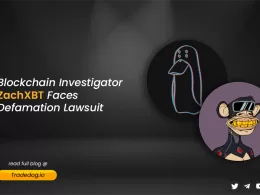Quick Links
To first understand Bitcoin mining, we must understand what cryptocurrency mining is in essence.
Cryptocurrency mining refers to the process of the creation of new digital coins by validating transactions on a blockchain and adding them to a decentralized distributed ledger where they can be located.
Bitcoin, which is the world’s first decentralized cryptocurrency uses blockchain technology to allow for peer-to-peer transactions without creating interdependencies with any third party like banks, governments, centralized institutions, etc.
Bitcoin mining refers to the process of validating transactions on the bitcoin blockchain, adding them to the distributed ledger, and adding new blocks to the blockchain. In layman’s terms, it is the process by which new bitcoins are created and distributed in form of rewards to the miners. This is currently achieved by the global decentralized network of computers running the bitcoin code.
To sum up the above, bitcoin mining involves the verification of new unique transactions on the bitcoin blockchain network and adding them to the ledger. It is done by solving complex cryptographic hash puzzles that verify blocks of transactions on the blockchain network.
To solve these puzzles, powerful computing power and sophisticated equipment are required. Miners are rewarded with Bitcoin in exchange, which is then released into circulation, hence the name Bitcoin mining.
Effects of Crypto Winter on Bitcoin Mining
In the bull run of 2021, Bitcoin mining was emerging as a very lucrative business choice. As BTC was rising at a steady pace, increasing more than 100% in value from $30K to $67K at its All Time High. As per the recent statistics, Bitcoin is down by nearly 75% from its ATH (All Time High) as of January, 2023. This had a direct correlation with the profitability of Bitcoin mining firms which dropped in profitability by more than 70% due to the plummeting value of Bitcoin.
The turmoil of the BTC mining industry at the end of 2022 can be assessed by the bankruptcy of “Core Scientific”, which was one of the largest mining company as its share dropped more than 98% in value.
Other than that, top mining firms like Bitfarms, Iris Energy and Cleanspark have also been affected by the crypto winter and have seen high drops in their share prices as well.
Faced with these challenges, several mining companies have been forced to turn off their mining rigs and reduce their overheads.
To make matters worse, the Arctic bomb cyclone at the end of December forced several Bitcoin mining firms in the United States to temporarily halt operations. This was done to restore power to the grid so that people could continue to heat their homes in the subzero temperatures. This resulted in a 40% drop in hash rate during the last week of December 2022.
Environmental Impacts of Bitcoin Mining
Electricity Usage
The Proof-Of-Work (POW) mechanism used by Bitcoin is very energy intensive as very high computing power is required by the miners.
Miners validate transactions on the Bitcoin blockchain while competing to provide the correct hash for a block. Miners who are the first to verify a certain number of transactions and provide the correct hash identifier receive Bitcoin as a new block is added to the chain.
Because of the decentralized production process, providing the correct hash identifier consumes enormous amounts of energy, encouraging competition and creating a “winner-take-all” game. As miners compete around the world to add new blocks to the chain, they employ mining rigs that consume significant amounts of electricity in order to compete.
CO2 Emissions
The Bitcoin network saw an enormous increase in CO2 emissions and was event termed as the world’s most pollutive cryptocurrency.
The Bitcoin network emitted around 86.3 million tons of CO2 emissions. In simple terms what it signifies is that it would require 431.6 million trees to remove the Bitcoin emissions from the atmosphere.
The Bitcoin networks proof-of-work (PoW) consensus mechanism, has always been criticized due to its high energy consumption. In September 2022, Ethereum, the world’s second-largest mining blockchain, completed the transition to a proof-of-stake (PoS) consensus mechanism, reducing the network’s energy usage by 99.95%.
Unlike PoW, which requires miners to compete and validate transactions using computational power, PoS requires token holders to lock a certain amount of their coins as collateral to verify transactions in exchange for rewards.
Bitcoin mining and renewable energy
Although Bitcoin mining has faced backlash and criticism from envronmentalists around the world for its negative impacts on the environment. Still there have been developments that have brought some positive change in the overall mining process to make it more sustainable.
As per reports from the Bitcoin Mining Council, there have been improvements in the sector as more and more miners shift to sustainable energy sources to operate their mining rigs. The overall sustainable mix of the bitcoin mining industry is estimated to be 59.4% as of Q3, 2022 which is a 3% improvement from the previous year and is increasing rapidly.
The most unique developments when it comes to Bitcoin and renewable energy is the introduction of a wave of “Green Bitcoins”, wherein companies are brining innovations to find sustainable sources of energy. Companies like Vespene are using methane emmissions from landfills as fuel to power bitcoin mining rigs.
Bitcoin Halving
The Bitcoin halving policy is the rule written in Bitcoin’s mining algorithm that cuts in half the rewards for bitcoin mining in every four years. This maintains scarcity and counteracts inflation to ensure that the Bitcoin price only appreciates over time as supply diminishes.
As per Forbes, at the closing of year 2022, Bitcoin had an inflation rate of less than 2%, which will only decrease after the next halving in year 2024.
The production scarcity of Bitcoin is what defines its finiteness. As the rewards go down, the supply also diminishes. Increase of demand at times of supply constraints result in increased price appreciation and makes Bitcoin a top choice for investors.
After the last halving of 2020, currently 6.25 BTC are rewarded to the miners when they add transactions to the Bitcoin Blockchain as part of the POW(Proof of Work) mechanism.
These blocks of transactions are added roughly every 10 minutes, and the Bitcoin code requires that the reward for miners be reduced by half after every 210,000 blocks. This occurs roughly every four years, and is frequently accompanied by increased Bitcoin price volatility.
Halving history and price movements
The first Bitcoin halving occurred in November 2012. The next halving occurred in July 2016, and the most recent halving occurred in May 2020.
When Bitcoin was first released in 2009, the reward for mining was 50 BTC per block. Each time a new halving occurs, the amount is reduced by half. For example, after the first halving, the reward for Bitcoin mining dropped to 25 BTC per block.
The final halving will occur in 2140. At that point, there will be 21 million BTC in circulation, and no new coins will be created. Miners will then be compensated solely through transaction fees.
| Serial Number | Date Range | Halving Year | Halving Number | Block Reward | Annual Supply Growth | Daily Issuance Rate |
| 1 | 2009-2012 | 50BTC | 2,625,000 | 7200 BTC | ||
| 2 | 2012-2016 | 2012 | 1st | 25 BTC | 1,312,500 | 3600 BTC |
| 3 | 2016-2020 | 2016 | 2nd | 12.5 BTC | 656,250 | 1800 BTC |
| 4 | 2020-2024 | 2020 | 3rd | 6.25 BTC | 328,125 | 900 BTC |
| 5 | 2024-2028 | 2024 | 4th | 3.125 BTC | 164,062 | 450 BTC |
It can be observed from the above chart that after each halving there is an overall appreciation in the price of Bitcoin over time.
- After the first halving of 2012, Bitcoin reach the first high of $994.21 on 2nd December 2013, a 7976% rise from the previous price of $12.31.
- After the second halving in 2016, the price of Bitcoin reached an ATH of $19,535.70 on 16th December 2017, a 1864.94% appreciation in price from the previous ATH.
- After the third halving in 2020, Bitcoin price appreciation reached an ATH of $64,863.98 on 11th December 2021, a 232.02% appreciation in price from the previous ATH.
Conclusion
With the extended continuation of the “Crypto Winter”, the Bitcoin mining industry has faced huge losses. With the extreme fall in price of bitcoin, the industry has become less profitable, forcing big firms to quit their operations.
The industry being highly energy intensive and susceptible to environmental forces is very volatile and difficult to penetrate due to high competition and capital intensive nature of setting up rigs.
With the introduction of PoS mechanism, PoW has already been highly criticized and facing backlash from environmentalists around the world.
As seen from the past trends, it can be assessed that the price of Bitcoin will surely exceed the previous ATH after the next halving occurs in 2024.
For 2023, it can predicted that with the offset of winter and arrival of the bull run, the industry can once again become profitable. The current miners just need to clear their overheads and survive, until the storm of bear market leaves.













